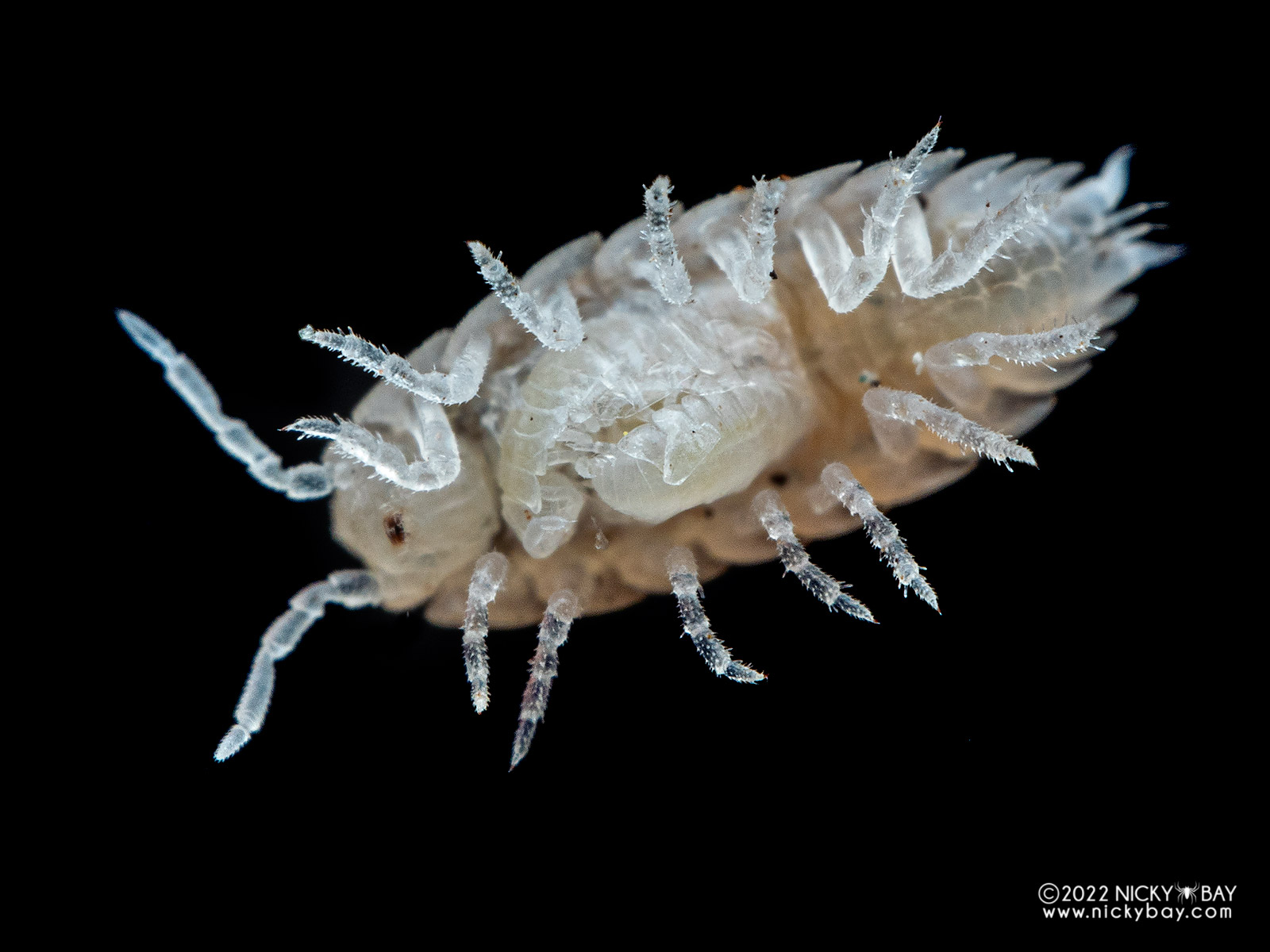Isopod Anatomy
Mature isopods have 7 pairs of walking legs that are pretty much the same. In Latin, “iso” means “same” or “equal” while pod means “foot”. However, isopod mancae (babies) have only 6 pairs of legs in their initial instars. Isopods also have 2 pairs of antennae — one large pair and a tiny pair that is normally not visible. The larger antennae are segmented into 5 peduncles and a flagellum, which may be further segmented into 2 or more articles.

The isopod body consists of a head (cephalon), a thorax (pereon) with 7 segments (pereonites), and an abdomen (pleon) with 6 segments (pleonites) where the last segment is fused with the telson to form the pleotelson. The head is fused with the first segment of the thorax to form the cephalothorax.
Sexing Isopods
Only a few species of isopods are sexually dimorphic. While some may exhibit size differences (the female is often larger), we usually need to look at the pleon’s ventral view to sex them. Males have a pair of long and slender endopods of the first 2 pleopods which are modified to serve as copulatory organs.

For some species, the males are easily recognised by their long, slender uropods.

Isopod Reproduction

The female isopods will release pheromones to signal that they are ready to mate – this may happen after a moult. The sexually mature male isopods will then initiate copulation by mounting the female in a nuptial ride and guarding her against other males while waiting for her to be receptive. This nuptial ride can sometimes take days. He inseminates her gonopores during intermoult or just before a growth moult.

The eggs are then formed in the brood pouch, which we often refer to as a marsupium. Despite the name, they are most definitely not marsupials. 🙂 The gestation may take a month before the mancae are visible under the brood pouch. When ready, the mancae will finally exit the marsupium for their first moult. During this, they still have only 6 pairs of legs and will only grow their 7th pair in subsequent moults.

The mancae may hang around the mother for a day or two if undisturbed. It is not verified if the mother provides any form of maternal care or protection for all species, but it has been reported that Porcellio hoffmannseggi mothers will fiercely protect their young.

Some species of isopods such as Nagurus cristatus and Trichorhina tomentosa are known to be parthenogenetic, which means that only the females are known and they are capable of reproduction without males.

Moulting and Growth
As described above, mancae start with 6 pairs of legs and form their 7th pair after their initial moults. Moulting, or shedding of its exoskeleton, is necessary for isopods to grow. Like many other invertebrates, their hard exoskeleton cannot expand, so their growth is defined by stages after each moult.


Isopods moult in two stages where the posterior half moults first, followed by the anterior half. This biphasic moulting allows the non-moulting half to carry out essential functions such as oxygen consumption, preventing water loss, and also to quickly escape predators.
Conglobation
Isopods of several families can roll up into a ball or pill, which we call conglobation. It is an effective defence mechanism against other smaller predators like spiders and ants. It is also the reason why many isopods are referred to as pill bugs or roly polies. On the other hand, species which are unable to conglobate typically have protruding uropods and are commonly called sow bugs.

Diet
Terrestrial isopods are also commonly called woodlice, as rotting wood forms a core part of their diet. They also feed on decomposing organic matter, including carcasses, dead leaves, lichen, etc.
For captive isopods, it is common to feed them fish food flakes, zucchini, pumpkin, carrot, freeze dried peas, dried minnows, etc.



